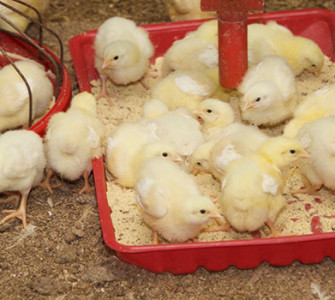IPSF: Feed Sustainability in Theory and Practice
26 January 2015
US – On the opening day of the International Poultry Scientific Forum (IPSF) in Atlanta, 26 January, sustainability of the feed sector was among the topics addressed. Jackie Linden reports.
Increasing consumer awareness of the ecological impact products make on the environment have triggered discussions of the responsibility food producers have for the environmental footprint of their finished products, said Dr Franco Mussini of Evonik Industries in the US in his presentation on the key parameters needed to assess environmental impact.
As a consequence, he said, all members of the production chain are developing programmes to understand and minimise their ecological impact in order to become more sustainable. Though most companies have developed sustainability programmes, many state actions but often fail to quantify how these actions modify the footprint of production processes on the environment.
To correct this, each step of the production process is studied to measure the different ways in which the process affects the environment, Dr Mussini explained.
Life Cycle Assessment (LCA) uses three different indicators developed to properly measure this impact: Global Warming Potential (GWP), Eutrophication Potential (EP) and Acidification Potential (AP). Taken together they assess accurately the environmental impact quantifying greenhouse gas (GHG) emissions but also the eutrophication of lakes and rivers, and acidification of rain and fog through pH reduction by the transformation of air pollutants into acids.
Dr Mussini said that, in this way, an accurate, quantitative impact is obtained presented as kilogrammes of carbon dioxide equivalent (CO2e; GWPl), kilogrammes of sulphur dioxide equivalent (SO2e; APl) and kilogrammes of phosphate equivalent (PO4e; EP) per unit produced.
He went on to explain how the release of carbon dioxide increases the greenhouse effect in two ways: the biogenic carbon concept and through land use change.
Using the cultivation of soybeans as as example, he said that the biogenic carbon concept would cover the fixation of carbon from the atmosphere through photosynthesis by the growing crop, while the cutting down of rainforest to make available land to grow the crop would increase the global warming potential.
Concluding, his presentation, Dr Mussini stressed that a proper understanding of how these indicators are calculated is indispensable to identifying how changes in the production process affect the LCA, and consequently the environmental footprint.
In a separate talk, he offered an overview of the AMINOFootprint®, a novel tool to measure sustainability progress in the poultry industry from the Evonik Corporation.
It has developed a software tool to accurately calculate these variations and provide customers with a quantifiable proof of their progress.
AMINOFootprint calculates the ecological impact of finished feed based on certified LCA data of each ingredient along with its inclusion rate. This software takes into account the origin of each ingredient, since the impact will change based on variables such as origination point and mode or modes of transportation.
The calculator currently makes it possible to look at the environmental impact of feed preoduction for broilers and pigs and allows for the calculation of the effects of a standard diet, individual formulations or a comparison of two diets based on different feed ingredients or sources, for example.
Posted on January 28, 2015

















